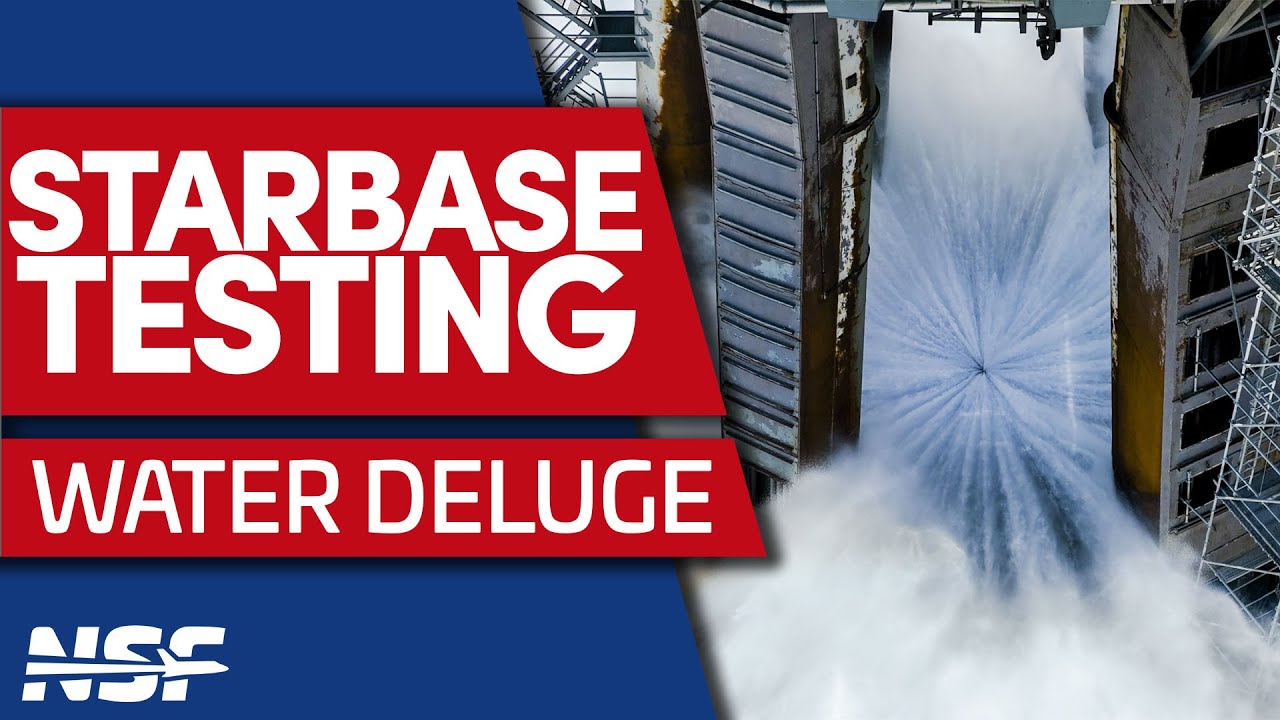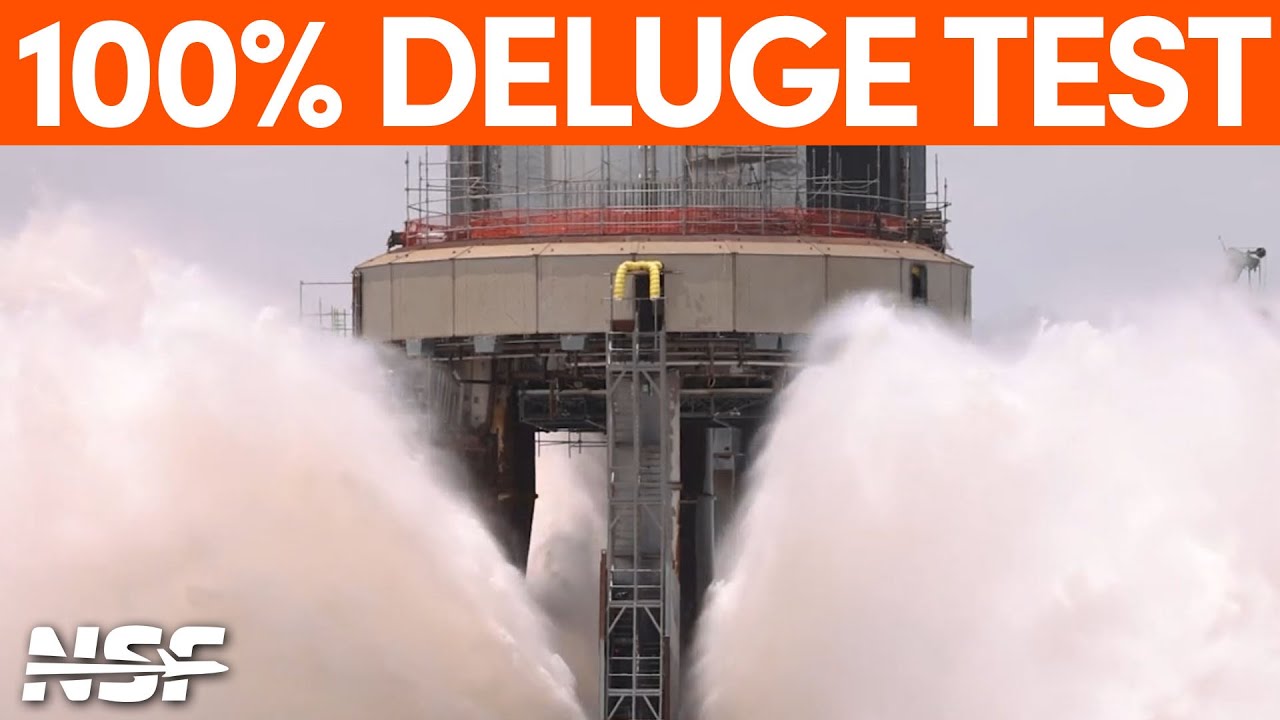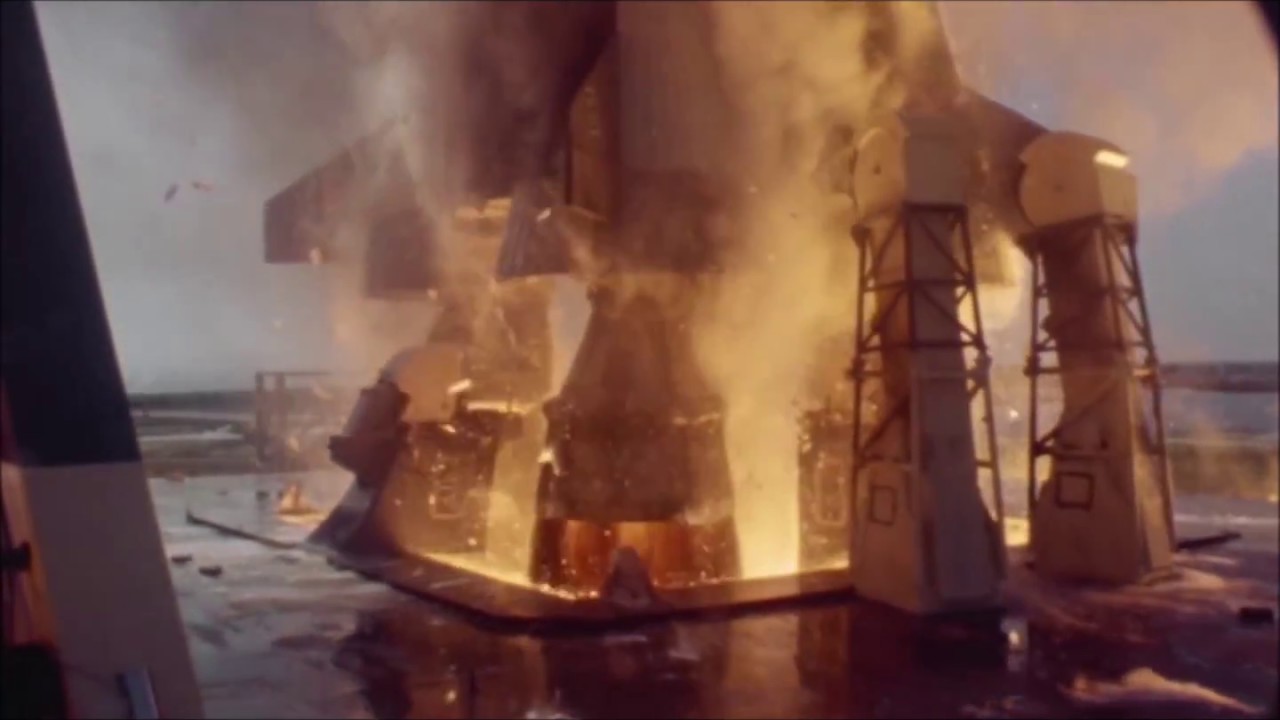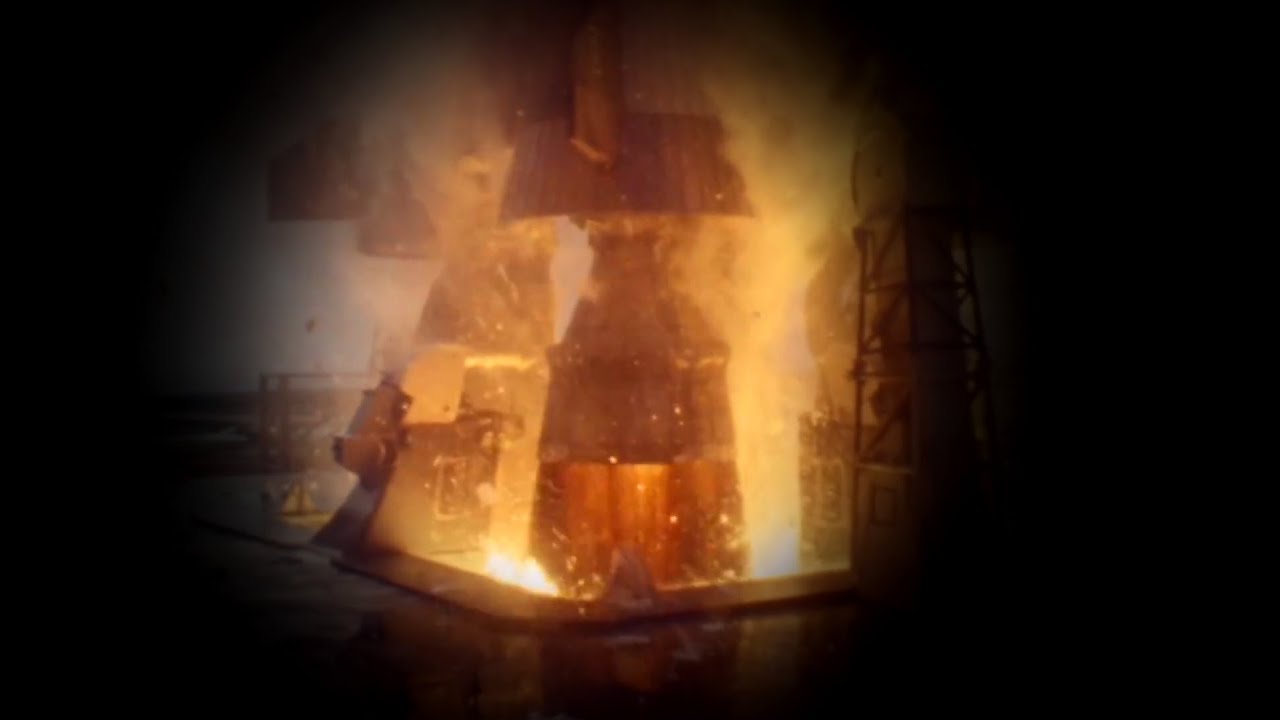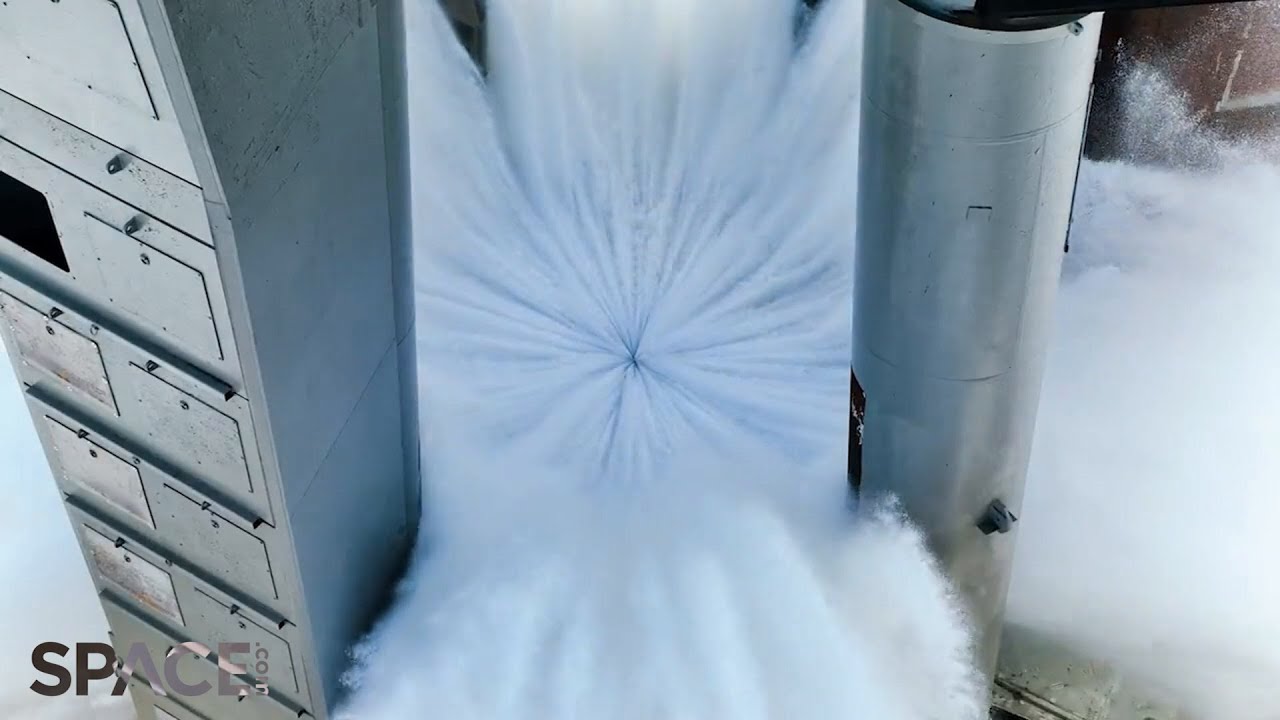Deluge test @ 1:09:55pm CDT:
Update: I have cued the video to start 15 seconds before the water deluge test begins. (@Fourmilab 2023-07-28 21:20 UTC)
Here are a variety of camera angles on the water deluge test and, at the end, a slow motion view.
I’m not sure what’s going on with the venting from the two white vertical tanks behind the orbital launch mount in some of the angles. There is a very brief venting near the vertical just before the water flow starts, and then at the time the flow begins to diminish, a very loud hissing and extended period of venting. Maybe this is releasing the pressurising gas (air? nitrogen?) that is driving the flow of water.
By my timing, the main water flow was about 35 seconds, tailing off gradually to none. This should be enough to handle direct impingement by the plume as the booster comes up to full thrust, lifts off, and rises to clear the tower. The water jets’ shooting outward should protect against the part of the exhaust plume that’s larger than the base of the booster.
Here is the famous camera E8 film of the liftoff of Apollo 11, taken by a 16 mm camera in an armoured enclosure on the mobile launch platform. You can see how the water deluge system protected the top of the launch platform from the plume during ascent, when it spread out beyond the cut-out that surrounded the engines during ignition.
This is the same camera view in extreme slow motion. The engineering cameras ran at a high frame rate to allow diagnosis in case of a really bad day. The water isn’t apparent until more than half way through this video, since at the start of the flight it’s flashing almost instantaneously to steam from the heat of the engines’ plumes. The vertical posts that appear to be on fire are the tail service masts that retract at liftoff. The flames are coming from an ablative coat applied to them to protect the metal from the heat by charring and carrying away the heat. The ablative coating was replaced after every launch.
This is a view of the water deluge test captured by a SpaceX camera on the orbital launch mount, looking down. The clip is first shown full speed, followed by a slow motion replay. Originally posted on 𝕏 by Elon Musk.
I wonder what are the ~20 circular impressions visible around the periphery of the pad before the water flow starts?
Of course there are deep piles as foundations for the launch pad – but the tops of those are reportedly buried under the pad of rebar & concrete as well as the steel plate structure of the flame deflector. So what are we seeing?
If you look at the very start of the flow, water appears to shoot vertically from the circular spots around the periphery and outward at an angle from the section at the centre. There is no water flow from the darker regions surrounding them. My guess is that the circular spots around the outside and the angular one at the centre are plates which have the holes through which water flows, and the darker region is solid metal without holes. You have to catch the start of the flow just as it begins to see this, as after a moment it’s obscured by the water jets above it.
Good catch! Some of the earlier speculation about the steel water dispersion plate suggested that it would be completely covered with holes for water jets. However, this video shows something different. Let’s hope it works as planned!
Were it not for the way psyops work nowadays, this would qualify as a SNL skit from the era when SNL was funny:
Last week, physicist Jeff Baumgardner told Spaceweather that a SpaceX launch earlier in July briefly punched a hole in the Earth’s ionosphere.
While I understand that Musk’s handlers are walking the same tightrope as Trump’s, they really should get over their damn paranoia about the American people that has led them to all but destroy the West with immigration to make us “Safe”.
KITTY HAWK, NORTH CAROLINA, December 8, 1903 (AP): The Federal Bureau of Stagnation issued a “halt work” order today and posted signs on the dunes around Kill Devil Hills in the North Carolina Outer Banks prohibiting further work on the so-called “flying machine” assembled here by Orville and Wilbur Wright of Dayton, Ohio. The Wrights, brothers and bicycle shop proprietors, have been flying gliders of their own design in the steady winds here since 1900, and recently have been working toward installing a motor they built which they hope will allow the gliders to fly under their own power.
Harley Timidson, regional director of the Bureau of Stagnation said, “These experiments with ‘flying machines’ have not been authorized by our bureau or any other government agency. They pose a risk to life and limb to all involved, including bystanders, and the motor creates loud and unnatural noises foreign to the seashore which risk disturbing the population of sand fleas (Talitridae) which inhabit the shoreline and are an important part of the Outer Banks ecosystem, part of the food chain supporting bird and animals in the region.
“Certainly, these Wright Brothers know that Professor Samuel Langley is engaged in developing a flying machine, funded by the War Department and the Smithsonian Institution, and is conducting his tests on the Potomac River near Washington under the eyes of federal officials. The Wrights’ amateur efforts pose unnecessary risks which must cease until a regulatory framework is developed to manage them. Because flying machines do not, at present, even exist, no work is underway to develop such regulations, which may take years to complete.”
A spokesman for the Wright brothers declined comment and said the brothers were unavailable for interviews, being presently engaged studying maps of the coastlines of Mexico and Central America.
There is, of course a grain of truth in this assertion. We (former) open-cockpit biplane aviators did ourselves, while “flying the fence” at my former grass strip in Dillsburg PA, refer to such aircraft as “bug smashers”.
https://www.faa.gov/space/compliance_enforcement_mishap
In summary, the FAA will not allow a return to flight operations until it determines that any system, process, or procedure related to the mishap does not affect public safety or any other aspect of the operator’s license. This is standard practice for all mishap investigations.
![How SpaceX Will Guarantee Its Launch Pad Never Fails Again! [Part 1]](https://scanalyst.fourmilab.ch/uploads/default/original/2X/f/f112f026b6c4594fb2239cfd0b565641d7d15160.jpeg)
